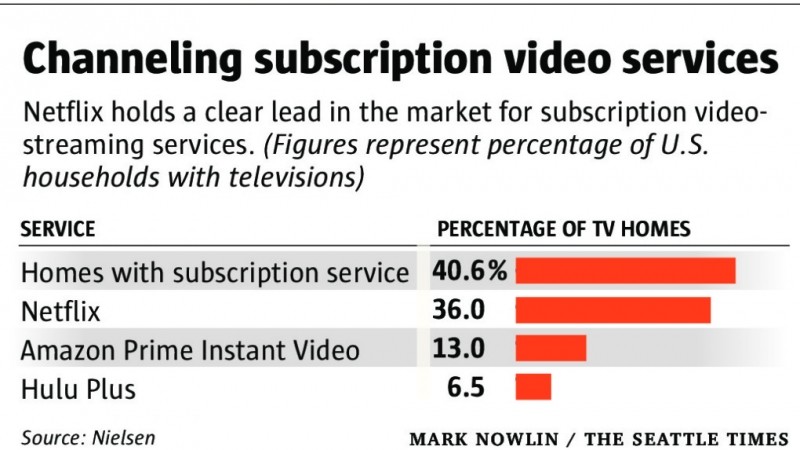Four out of ten U.S. homes with TVs now subscribe to some form of streaming service like Netflix or Hulu, according to a new Nielsen report. The media tracking company published its Total Audience Report, in which Netflix takes the clear lead when it comes to on-demand video with around 36% households subscribing to the service as of Q4 2014. Amazon Prime Instant Video came in second with 13% while Hulu stood third at 6.5%.
The study shows how streaming video challenges traditional TV viewing. According to Nielsen, people in the U.S. are spending more time consuming media but less time watching live TV. Specifically, the study found that the average adult watched 4 hours and 51 minutes of live television every day during the fourth quarter, down 13 minutes a day from last year.

Nielsen's study doesn't break down how many minutes a day households spend watching video through streaming services, but it says Internet usage on PCs is up 5 minutes a day, and smart phone usage is up 17 minutes a day.
Other interesting tidbits: about 13 percent of U.S. homes subscribe to more than one streaming service, and homes that use those streaming video services watch nearly 50 minutes more video a day than homes with traditional TV viewing and no access to subscription offerings like Netflix and the like.
While we're far from spelling doom and gloom for traditional television watching – and perhaps there'll always be a place for its mix of live and linear programming nature – it is declining faster than ever as streaming services become a mainstream feature in more homes.
The writing is on the wall. Premium channels like HBO and Showtime are now launching as standalone online subscription services, companies like Netflix are throwing big bucks at making their own original content (and successfully so), Dish finally brought live sports in a solid package for cord-cutters as part of Sling TV, and for now it seems the balance is tilting in favor of net neutrality. It's time for big cable to rethink their entire offerings and business model.